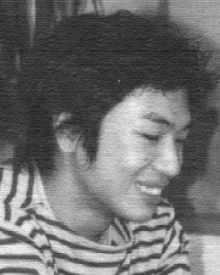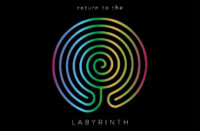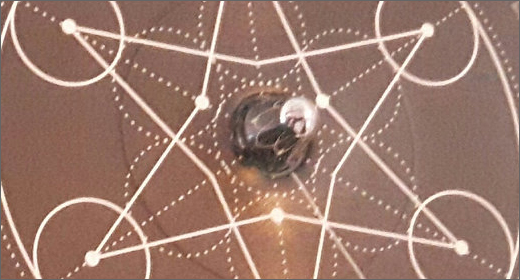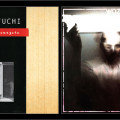
Igloo: Hello. It is a pleasure to chat with you about your
adventures in sound. How are things in Tokyo?
Nao Sugimoto / Spekk, Plop: Hi there. It’s getting warm here and the skies are beautiful so it’s nice. Things are going well except I am pretty busy since I started my new label.
Igloo: That’s good news – so tell me, after founding the Plop label in 2001, I want to congratulate you on the inauguration of this newest imprint called Spekk. Tell me how that came about and how the two differ.
NS: Thanks. First of all, the biggest difference between Plop and Spekk is that Plop is a division of a record company and Spekk is completely my personal label. Spekk is a platform to focus and explore various interpretations of minimalism and allows me to concentrate more on the concept – whereas I have to think more about the marketing and the sales for Plop. I had started Plop to introduce/support new talents by taking advantage of the company’s distribution network and facilities, because at that time, it was difficult for the independent labels and new artists to get into the market because of distribution problems and promotion weaknesses. After the 3 initial years of experience with Plop, I thought it was time for me to launch a label for myself – simply more freedom. Anyway, both labels are important for me to keep balance of my activities.
Igloo: Balance is my mantra! Tell me your impression of how the Internet has influenced an explosion in the development of international sound-art based projects in electronic music. What links do you make between minimal sound and minimal visual art?
NS: I really feel the power of the Internet when I receive so many inquiries and mail orders from abroad. This is just a small new label from the Far East and people can easily access their various needs. Also there are many artists sharing sound files via Internet for collaborations, and considering that there are MP3 labels and visual projects online, yes it has helped a lot.
I see the links between minimal sound and visual art in terms of focusing on the space, tones, textures, balance; when I hear the sounds, I sometimes imagine graphical patterns like the subtle gradations of color, dots on grids etc. and actually many sound artists are graphic designers as well.
Igloo: Very true, I have enjoyed some of the graphic work by M. Behrens, Richard Chartier, JS Adams and Stephan Mathieu. Do you feel that Japan is a central hub for innovative work on the avant garde side of experimental electronic music?
NS: Maybe just a part of it… there are many great innovators here but the scene is very small. So it’s hard to imagine being a central hub. For instance, the Japanese improvisers are a lot more established outside their country. So, I guess what looks “central” depends on where you look at.
Igloo: Right. An “outsider” perspective always seems kind of mysterious, with another worldly viewpoint. I really enjoy that about the arts in general. Speaking of international perspectives – can you tell me, with labels like Mille Plateaux, Raster-Noton, Kompakt, 12K, Trente Oiseaux, Meme and many others who have made a great contribution to the field, what is the kinship felt in the very independent market of minimal electronic music-makers. Explain, if you will, how this is developing into an arts community, even if this is happening subconsciously.
NS: I’m not sure about that, but I think the exchanges over the last few years between the labels and artists worldwide have developed some kind of community and everyone is helping each other with collaborations and releases, which is really nice.
Igloo: You often see mix projects or curatorial collaborations like those with Fallt and BiP-Hop, which I find fascinating. To get a little more specific then – could you respond to how your label parallels that of 12K if you think there is a connection.
NS: It might seem like that since our first two releases are from the people behind 12k/line. Actually, I became acquainted with them because I distribute 12k and 3 Particles (Richard Chartier’s label) releases in Japan. They offered me the opportunity to release their new album and I was about to launch my own label so it was natural to start off by releasing their albums. And of course because I really love their works! I also admire 12k as a label – always introducing new talents, continuation, strong concept and beautiful artwork.
Igloo: That is for sure. I had a great discussion with both Taylor and Richard at last year’s Mutek Festival in Montreal, it was a seminar on MP3s and the evolution of sound art, and we all seemed very much in agreement about the physical object and its importance in the industry as a whole. They truly care about the overall concept and its graphic impact. I know the effort that goes into a business that is defined by some as “esoteric” and “non-industry standard” and am sure it is not a lucrative business (especially as a start-up), your audience is somewhat limited and specialized. In many ways what you do would be deemed by your love of different music that takes risks and is defined more on its more elusive, sensory terms. Could you respond to that comment with your own impressions of what defines your vision and that of your audience?

NS: Yes, running a label like this is not about business for money. Definitely it’s run by passion and creativity. So it’s ok as long as I break even to keep the label going. Otherwise I’ll lose the point and wouldn’t be able to concentrate on the total production. For example, the packaging of Spekk releases are all custom made and it’s actually 3 times more expensive than Plop, but I’m still happy because the concept is more important for the label. And I would also be happy if it reaches more of an audience, but that is just a result of keeping up the good work.
Igloo: I have to say that your first two releases are completely stunning, some of the best artwork I have seen, and they truly uphold a solid standard to follow. Now, if I may get just a little more personal to as – who exactly is Nao Sugimoto and what do you do when you are not developing such interesting projects?
NS: I work over 12 hours a day at my regular work and doing Spekk on weekends so I don’t have much time to do anything else at the moment. I also make music myself under the alias Mondii, and released an album on Hefty Records a couple of years ago. I want to develop my music more but it’s moving really slowly. I’m also participating in few other musical projects and supposed to release an album for my band project called RdL but I need more time!
Igloo: I would love to hear that record! It’s great to know that you, along with many others (Bernhard Gunter, Kim Cascone, Bender/Nicolai/Bretschneider, et al) work in this peer level way to support other like emerging artists through taking the risks or releasing music yourselves! And when it comes to newcomers and those more established, are there any artists you would really like to work with in the future? Do you have any suggestions for upcoming artists who you have seen or heard that we should be hearing more of?
NS: Yes, there are many artists. I’ll be releasing a new album by Boca Raton, which is a solo project by Martijn Tellinga from the Netherlands. His music is totally unique: very materialistic and it’s like a sequence of different sounds. Almost like listening to a rolling object going over different obstacles. And there will be an album by John Hudak, which is really conceptual: transforming his voices into beautiful tones like reflections in a mirror. There’s also an album coming up from a new artist called Pola. He’s from Japan and his music is very melodic using tiny colorful elements in his own style. Anyway, I wish to keep on releasing fresh sounds without any limitations.
Igloo: Well, I will certainly be looking for those – I have always enjoyed John Hudak’s work and new artists are always welcome to the fold. I appreciate having the time to chat with you about your perspective. Do you have any closing remarks or ideas, quotes or latest gossip to share?
NS: Glad you asked me that! I should mention the next releases on Plop so the artists won’t think I’m only into Spekk! In March, there will be an album by Lullatone – he’s from the US but now based in Japan teaching English at Japanese junior high schools. This is his third full album within a year (!) after releasing from Audio Dregs and Nobukazu Takemura’s Childisc label. It sounds like a charming tiny orchestra of toy instruments. There will also be a new album by Fonica in May. They are currently working on remix project for Rafael Toral and they appeared on the 12K guitar comp, with a minimal sound-art direction. It’s good to see the artists crossing borders and getting to know each other. So regardless of Plop or Spekk, the music only speaks for itself.
Igloo: That is does! Yeah, Audio Dregs is run by monsieur E*Rock from my hometown here in the Pacific Northwest! I was very impressed with Lullatone’s record with them and gave it 3 or 4 thumbs up. Thanks again Nao, it was great to get to know you a bit better.
::..:::…..:..::….:::::..:::..:::::::……:::…::.:::….::::..:..:::…::…….:::::
M I C R O V I E W

>>> Key
::..:::…..:..::….:::::..:::..:::::::……:::…::.:::….::::..:..:::…::…….::::
>> From the brand newest minimal electronic label (est. 2004) Tokyo’s Spekk has instantaneous street cred from the moment it was born. The first release is Taylor Deupree’s January. With a liner note welcoming his new son into the world, perhaps this is a micro-lullaby – it certainly starts off that way. With mellow minor tones and gentle harmonies this imprints inaugural is memorable at its inception. With tracks like the spartan “Skimming” the direction is formally introspective, with an uncharacteristic, quivering warmth. The delicate packaging reflects the methodical contents and makes a stunning design depicting the highest wires of a suspension bridge as lines and dots in an endless blue sky (courtesy of photographer Uison). Similarly, the slim, medium-format tray card has a smooth, matte finish complementing and mirroring its sound soul. Deupree fractalizes small tones and duplicates them over and over, channeling a bright drone on the twelve-minute piece “Shimbuyu_9.” It’s a bit of an amorphous, gas-like piece. A sombient buzz is in the air delivering the final “Quiet_C” which rings with chi vibes and anonymity. January is attuned to the elements in its quest for intelligent life in heavenly cellular bodies.
::..:::…..:..::….:::::..:::..:::::::……:::…::.:::….::::..:..:::…::…….::::
>> As a co-inaugural release on Spekk, William Basinski (Raster-Noton, Three Poplars, Durtro) and Richard Chartier (12k/Line, Fallt, Meme) team up on two long and elegant tracks. Originally recorded by Chartier, then sent to Basinski for further development, the two came back together to do a final mix and out came this recording. Basinski has been experimenting with sound back to his days in the 70s as a classically trained clarinetist through his disintegration of loops and commercial entities like Muzak, which became sort of a scientific distillation for him. This recording is laden with delicate stratum of prepared tonal fragments, as if you were hiding inside a piano and moving around delicately as not to be heard, and in doing so trembling slightly. It’s like some craggy edges of uranium falling in slow motion through the sound barrier of an unknown galaxy. Quite inspired by light, time and classical music for sure. There is also the feeling that this was something recorded on super 8 film sometime in the 50s and it’s been in a musty attic for decades collecting dust and various algae. The cover seems to reify my impressions in a molten rust encrusted painting with Rothko-esque subtleties by Chartier (circa 2000). There is a reverence that each of these musicians is paying to one another on these two peculiar untitled tracks. Overall, there are diminutive voices that are mostly undetected in the fleeting background. This is a haunting record of great depth in ambient eccentricity.
::..:::…..:..::….:::::..:::..:::::::……:::…::.:::….::::..:..:::…::…….::::
>> Plop was the predecessor of the new Spekk label by brewing Japanese electronic label mastermind-in-the-making Nao Sugimoto. Here he presents France’s Gel (Julien Loquet) incorporating the significant work of musicians Dorine Muraille (guitar and computers) and Arden Day (prepared piano). Reminiscent of Chicago’s cut-up guitar work ala Thrill Jockey-redux, this is a breathtaking, and at times tongue-in-cheek post take on the genre. I am only sorry that I just unwrapped it after months of being sandwiched between other like titles in my secret music closet. Day’s piano is graceful as it is contorted randomly as on “Prive.” Saturated in rational organisms, Dolce is nourishment for the most discerning aural appetite.
::..:::…..:..::….:::::..:::..:::::::……:::…::.:::….::::..:..:::…::…….::::
>> I am playing catch-up to a great label. Piano, faded electronic add-ins and other computerized voice samples make Yupi an immediately friendly work. Though this is one of those really quirky records that goes from 0-60 if you sneeze you’ll miss the transition as the orchestral “Curcurus” attests. Big cymbals and pit banter between strings and other mysterious bow-tied goings on. There are moments where tuning a space-ray guitar suddenly mood-swings through lil’ house on the prairie pretty harp strings and violins creating an instant repetitious levity. At times this is quite a precocious record, but Hashimoto is quite good at dizzying his audience enough to give them a feeling of inebriating release. It’s a backwards walk up an endless staircase.
::..:::…..:..::….:::::..:::..:::::::……:::…::.:::….::::..:..:::…::…….::::















![Pole :: Tempus Remixes (Mute) — [concise]](https://igloomag.com/wp/wp-content/uploads/2025/04/pole-tempus-remixes_feat-75x75.jpg)






![Hasbeen :: Bunker Symphonies II (Clean Error) — [concise]](https://igloomag.com/wp/wp-content/uploads/2025/04/hasbeen-bunker-symphonies-ii_feat-75x75.jpg)

